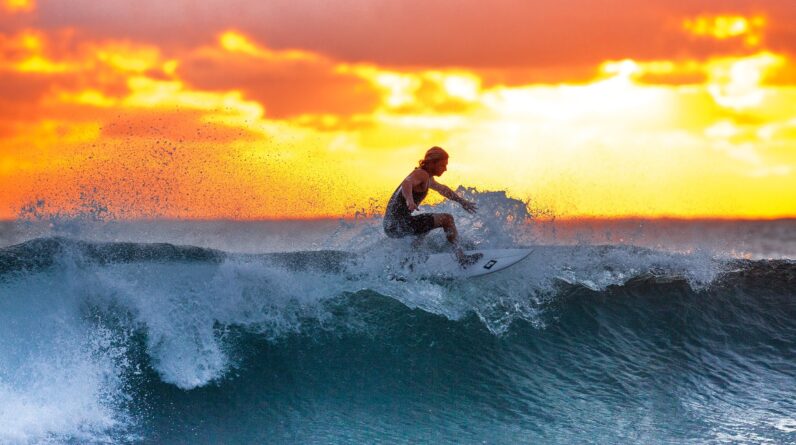
So you’ve mastered the art of catching waves, and you’re ready to take your surfing skills to the next level. But before you paddle out into the ocean, it’s crucial to choose the perfect traction pad for your surfboard. A traction pad not only provides grip and stability but also enhances your overall performance on the wave. In this article, we will guide you through the process of selecting the ideal traction pad specifically designed for advanced surfers like yourself. Get ready to ride those waves with confidence and style!
1. Understanding Traction Pads
1.1 What are Traction Pads?
Traction pads, also known as deck grips or deck pads, are an essential component of a surfboard. They are made of durable materials, typically EVA foam, and serve as the surfer’s connection to the board. Traction pads are attached to the deck of the surfboard, providing a reliable grip and traction for the surfer’s feet while riding waves.
1.2 Importance of Traction Pads for Advanced Surfers
For advanced surfers, traction pads play a crucial role in enhancing performance and control on the waves. When executing maneuvers and tricks, having a strong grip and stability on the board is essential. Traction pads provide the necessary traction and grip, allowing advanced surfers to push their limits and perform with confidence.
1.3 Different Components of Traction Pads
Traction pads consist of several components that work together to provide optimal performance. These components include the main body, arch bars, tail kicks, and channels. The main body of the traction pad covers the majority of the deck, providing grip and traction for the front foot. Arch bars are elevated sections on the traction pad that offer additional support and stability to the arch of the foot. Tail kicks are raised sections at the back of the traction pad, providing leverage and control for maneuvers. Channels can be found on some traction pads and help with water flow and traction.
1.4 Types of Traction Pads
There are various types of traction pads available to suit different surfers’ preferences and needs. Some popular types include flat traction pads, multi-piece traction pads, chamfered traction pads, arch bars and tail kicks, traction pads with channels, diamond grooved traction pads, cork and eco-friendly options, customizable traction pads, pro models and signature pads. By understanding the different types, surfers can choose the one that best suits their surfing style and preferences.
2. Factors to Consider
2.1 Surfing Style and Performance
When selecting a traction pad, it’s important to consider your surfing style and the level of performance you aim to achieve. Different traction pads offer varying levels of grip, traction, and sensitivity. For high-performance surfing and aggressive maneuvers, a traction pad that provides maximum grip and responsiveness would be ideal. On the other hand, if you prefer a more laid-back cruising style, a traction pad with a less aggressive grip may suit you better.
2.2 Materials Used
The materials used in a traction pad greatly impact its durability, comfort, and performance. The most common material used for traction pads is Ethylene-Vinyl Acetate (EVA) foam, which offers excellent grip, cushioning, and resistance to water absorption. Another popular material is Thermo Plastic Elastomer (TPE), which provides similar qualities to EVA foam but with added eco-friendly features. Natural rubber is another option known for its durability and grip, although it may not offer the same level of cushioning as foam-based traction pads.
2.3 Grip and Traction
Grip and traction are arguably the most essential factors to consider when choosing a traction pad. Different traction pad designs offer varying grip patterns, such as diamond grooves, square grooves, or circular geometric patterns. Evaluating the grip and traction of a traction pad can be subjective, as it depends on personal preference and the type of surfing you engage in. It’s recommended to try out different traction pads and determine which grip pattern provides the best traction for your style.
2.4 Arch Support and Cushioning
Arch support and cushioning are important for comfort and injury prevention during long surfing sessions. Traction pads with built-in arch bars provide additional support to the arch of the foot, reducing the risk of foot fatigue and increasing overall stability. The level of cushioning can vary between traction pads, so it’s crucial to find a balance between comfort and responsiveness based on personal preference and foot shape.
2.5 Tail Kick and Kick Patterns
Tail kick refers to the raised section at the back of the traction pad, which allows the surfer to leverage the board for maneuvers. The angle and size of the tail kick greatly influence the responsiveness and control of the surfboard. Different traction pads offer various tail kick angles and patterns, catering to different surfing styles and preferences. Advanced surfers may prefer a steeper and more pronounced tail kick, while others may opt for a more subtle design.
2.6 Size and Shape
The size and shape of a traction pad should align with the dimensions of your surfboard. It’s important to select a traction pad that covers an adequate portion of the board’s deck, ensuring proper coverage for your feet. Additionally, considering the shape of the traction pad in relation to your foot size and stance is crucial for a comfortable and secure fit. Traction pads come in various shapes, including full-deck traction pads, noserider and longboard pads, and shortboard and performance pads, each designed to cater to different board types and riding styles.
2.7 Water Temperature and Conditions
The water temperature and conditions you typically surf in can influence the choice of traction pad. In warm water temperatures, EVA foam-based traction pads perform well and provide optimal grip. However, in colder water, EVA foam can become stiff and lose some of its traction. In these conditions, alternative materials such as TPE or natural rubber may provide better grip and flexibility.
2.8 Compatibility with Surfboard
It’s essential to ensure that the traction pad you choose is compatible with your surfboard. The dimensions and shape of the traction pad should align with the board’s deck, providing proper coverage without interfering with foot placement or board performance. Additionally, adhesive compatibility should also be considered, as some traction pads require specific adhesives for proper installation.
2.9 Personal Preferences
Ultimately, personal preference plays a significant role in selecting the right traction pad. Factors such as color, aesthetics, and brand reputation may influence your decision. It’s recommended to choose a traction pad that not only meets your functional requirements but also aligns with your personal style and preferences.
2.10 Budget Considerations
Budget is another factor to consider when choosing a traction pad. Traction pads vary in price depending on the brand, materials used, and additional features. It’s important to strike a balance between quality and budget, ensuring that you get a traction pad that meets your needs without breaking the bank.

This image is property of cdn.shopify.com.
3. Choosing the Right Type
3.1 Flat Traction Pads
Flat traction pads are the most basic and common type of traction pads. They provide a flat surface with uniform grip, suitable for surfers who prefer simplicity. Flat traction pads are often used on shortboards and high-performance surfboards, as they allow for greater maneuverability and foot movement.
3.2 Multi-Piece Traction Pads
Multi-piece traction pads consist of two or more separate pieces that can be arranged on the deck of the surfboard. This design allows surfers to customize the placement of the traction pads to better suit their foot positioning and surfing style. Multi-piece traction pads are especially useful for surfers who have specific preferences or unique foot placement.
3.3 Chamfered Traction Pads
Chamfered traction pads feature beveled or rounded edges, providing a smoother transition between the traction pad and the surfboard’s deck. This design reduces the risk of irritation or discomfort caused by sharp edges, particularly during extended surfing sessions. Chamfered traction pads offer enhanced comfort and can be a great choice for surfers who value a seamless and comfortable connection with their board.
3.4 Arch Bars and Tail Kicks
Some traction pads come with integrated arch bars and tail kicks, providing additional features for advanced surfers. Arch bars are raised sections along the centerline of the traction pad, offering increased support and stability to the arch of the foot. Tail kicks, as mentioned earlier, are raised sections at the back of the traction pad, allowing for better leverage and control during maneuvers. Arch bars and tail kicks can greatly enhance performance and are ideal for advanced surfers looking for that extra edge.
3.5 Traction Pads with Channels
Traction pads with channels have grooves or channels running across the surface of the pad, enhancing water flow and maximizing traction. These channels help to disperse water and improve grip, especially in challenging conditions where water can accumulate on the deck. Surfers who often ride in powerful and barreling waves may benefit from traction pads with channels, as they offer increased control and responsiveness.
3.6 Diamond Grooved Traction Pads
Diamond grooved traction pads are designed with diamond-shaped grooves across the surface of the pad. This pattern provides exceptional grip and traction, especially in critical sections of the wave. Diamond grooves are known for their ability to enhance board control and responsiveness, making them a popular choice among advanced surfers.
3.7 Cork and Eco-Friendly Options
In recent years, there has been a growing demand for eco-friendly traction pads. Cork traction pads have gained popularity due to their sustainable and natural properties. Cork offers excellent grip and traction, and its softness provides a unique feel underfoot. For surfers who prioritize sustainability and environmentally friendly options, cork traction pads are worth considering.
3.8 Customizable Traction Pads
Customizable traction pads allow surfers to design and personalize their traction pad to fit their style and preferences. Some brands offer the option to choose the grip pattern, color combination, and even add custom logos or artwork. Customizable traction pads are perfect for surfers who want a unique and personalized touch on their surfboard.
3.9 Pro Models and Signature Pads
Pro models and signature pads are traction pads designed in collaboration with professional surfers. These traction pads are often tailored to meet the specific needs and preferences of the pro surfer, providing advanced features and performance-enhancing qualities. Pro models and signature pads offer surfers the opportunity to use the same traction pad as their favorite pro surfer, providing a sense of connection and inspiration.
3.10 Experimenting and Trying Different Varieties
Choosing the right traction pad often involves trial and error. Each surfer has unique preferences and requirements, and what works for one might not work for another. It’s important to experiment and try different types of traction pads to find the one that best suits your needs. Don’t be afraid to explore different varieties and seek out recommendations from other experienced surfers to help you make an informed decision.
4. Understanding the Design
4.1 Patterns and Textures
The patterns and textures of a traction pad’s surface greatly influence its grip and performance. As mentioned earlier, there are various grip patterns available, such as diamond grooves, square grooves, or circular geometric patterns. Each pattern offers different levels of traction, responsiveness, and water flow. Textures can range from smooth to more aggressive, depending on personal preference and the desired level of grip.
4.2 Grid vs. Dot Patterns
Grid patterns consist of intersecting lines that create small squares or rectangles on the traction pad’s surface. These patterns provide a consistent and reliable grip, allowing for precise foot placement and control. Dot patterns, on the other hand, feature small raised dots or circles across the surface. Dot patterns offer a more dispersed grip, providing a unique feel underfoot. Both grid and dot patterns have their advantages, and the choice depends on personal preference.
4.3 Arch Bar Placement
The placement of the arch bar on a traction pad is critical for providing adequate support and stability to the arch of the foot. Arch bars are typically positioned along the centerline of the traction pad, aligning with the natural curve of the foot. However, the exact placement can vary between traction pad designs. It’s important to choose a traction pad with arch bar placement that matches your foot’s natural arch to maximize comfort and support.
4.4 Tail Kick Angles
Tail kick angles determine the steepness and aggressiveness of the raised section at the back of the traction pad. Different traction pads offer varying tail kick angles to cater to different surfing styles and preferences. Steeper tail kick angles provide more leverage and control, ideal for advanced surfers who require quick response and maneuverability. Less pronounced tail kick angles offer a more subtle lift, suitable for surfers who prioritize a smoother and flow-oriented style.
4.5 Cutouts and Holes
Some traction pads feature cutouts or holes within the design, providing additional grip and traction. These cutouts and holes allow for better water flow and displacement, avoiding the build-up of water that can affect traction. Cutouts and holes also help to reduce weight and increase flexibility in the traction pad. The location and size of these cutouts and holes can vary, offering different levels of grip and responsiveness.
4.6 Color and Aesthetics
While not directly related to performance, the color and aesthetics of a traction pad can significantly impact the overall look and feel of your surfboard. Traction pads come in a wide range of colors and designs, allowing surfers to express their personal style and preferences. Whether you prefer a vibrant and eye-catching color or a more understated and classic look, choosing a traction pad that complements your surfboard and reflects your personality can add a touch of individuality to your surfing setup.
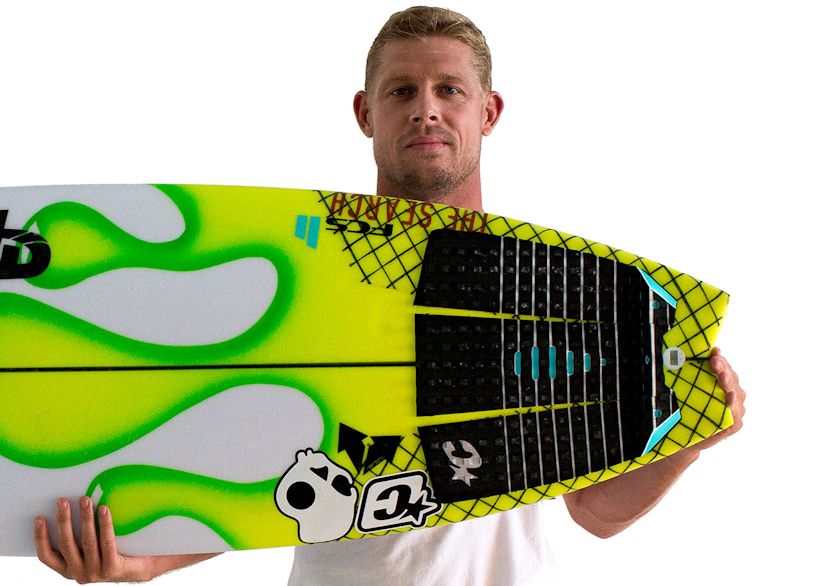
This image is property of lanzasurf.com.
5. Evaluating Materials and Durability
5.1 EVA Foam
EVA foam is the most commonly used material for traction pads due to its excellent grip, cushioning, and durability. This foam offers optimal traction even when wet, ensuring that surfers maintain a strong grip on their board. EVA foam is also resistant to water absorption, preventing the traction pad from becoming heavy or losing its grip over time. Additionally, EVA foam is known for its resistance to UV rays, ensuring that the traction pad maintains its color and performance under the sun.
5.2 TPE-based Traction Pads
Thermo Plastic Elastomer (TPE)-based traction pads are gaining popularity as a more eco-friendly alternative to traditional foam-based traction pads. TPE is a biodegradable and recyclable material that offers similar grip, cushioning, and durability as EVA foam. TPE-based traction pads provide a comfortable and responsive feel underfoot, making them a great choice for environmentally conscious surfers.
5.3 Natural Rubber
Natural rubber is another material used in traction pads, known for its durability and grip. Traction pads made from natural rubber provide a secure and reliable grip, even in water. However, natural rubber may not offer the same level of cushioning and comfort as EVA foam or TPE-based traction pads. Furthermore, natural rubber can be more susceptible to wear and tear over time, so it’s important to consider the durability of the traction pad when made from this material.
5.4 Combination of Materials
Some traction pads combine materials to offer a balance of grip, comfort, and durability. For example, a traction pad may feature an EVA foam main body for superior grip and cushioning, while using a natural rubber arch bar for added durability and grip. Combinations of materials can provide the best of both worlds, ensuring optimal performance and longevity.
5.5 Abrasion Resistance
Durability and abrasion resistance are crucial factors to consider when evaluating the materials used in a traction pad. Advanced surfers often subject their traction pads to intense use and challenging conditions, so it’s important to choose a traction pad that can withstand the demands of high-level surfing. Look for materials that have been tested for abrasion resistance and can hold up to frequent use without losing their grip or breaking down.
5.6 UV Protection
UV protection is especially important for surfers who spend a lot of time in sunny conditions. The sun’s rays can cause damage and discoloration to traction pads over time. Opting for a traction pad that has UV protection can help prolong its lifespan and maintain performance. Foam-based materials such as EVA foam and TPE are known for their resistance to UV rays, making them great options for surfers who frequently surf under the sun.
6. Understanding Grip and Traction
6.1 Diamond Grooves
Diamond grooves are a popular grip pattern found on many traction pads. The diamond-shaped grooves provide excellent grip and traction, effectively gripping the soles of the surfer’s feet. This pattern promotes stability and control, allowing advanced surfers to execute maneuvers with confidence. Diamond grooves are particularly effective on shortboards and high-performance surfboards, where precise foot placement is crucial.
6.2 Square Grooves
Square grooves feature intersecting lines to create small squares or rectangles on the traction pad’s surface. This pattern offers reliable grip and traction, allowing surfers to confidently wrap their feet around the board. Square grooves provide a good balance between grip and sensitivity, making them suitable for various surfing styles and conditions.
6.3 Circular Geometric Patterns
Circular geometric patterns consist of raised dots or circles arranged in a pattern across the surface of the traction pad. This design offers a dispersed grip, providing a unique and comfortable feel underfoot. Circular patterns may be preferred by surfers who enjoy a softer and more forgiving grip or those who prioritize a smooth and flow-oriented style of surfing.
6.4 Innovative Traction Technologies
In recent years, various innovative traction technologies have emerged. These technologies aim to enhance grip and traction, providing surfers with the best possible performance. Some traction pads incorporate texture variations, 3D patterns, or proprietary grip compounds to maximize traction and control. When exploring traction pads, consider these innovative technologies and assess whether they align with your preference and performance goals.
6.5 Testing and Comparing Grip
The grip and traction of a traction pad can be subjective and dependent on personal preference. To determine the right level of grip for your surfing style, it’s recommended to test and compare different traction pads. Trying out various grip patterns, textures, and technologies can help you discover the type of grip that provides the best performance and control for you.
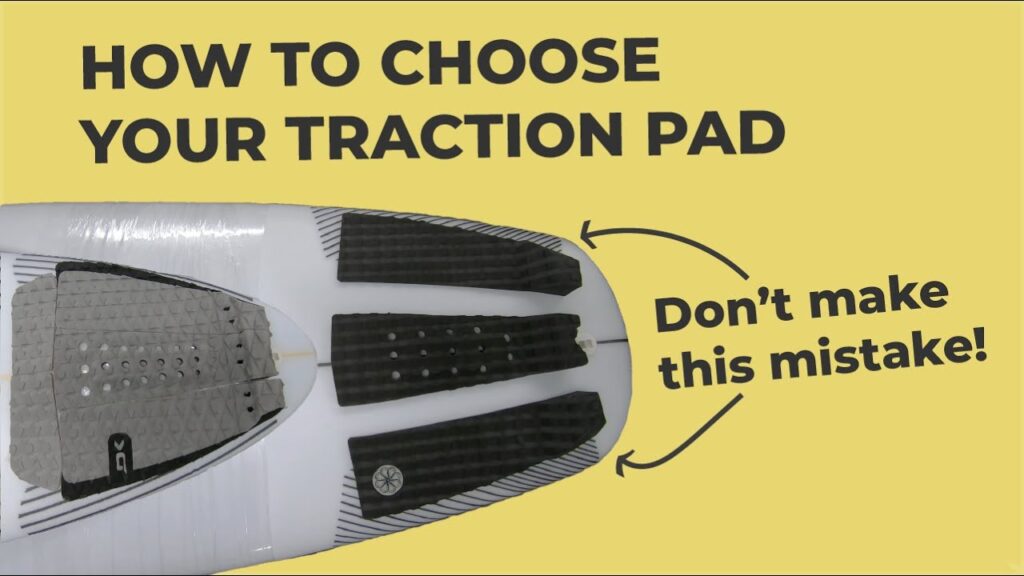
This image is property of i.ytimg.com.
7. Importance of Arch Support and Cushioning
7.1 Arch Bars and Raised Ramps
Arch bars, as mentioned earlier, are elevated sections along the centerline of the traction pad. These arch bars provide added support and stability to the arch of the foot, reducing the risk of foot fatigue and discomfort. Arch bars play a crucial role in advanced surfing, as they help maintain balance and control during maneuvers. Some traction pads also feature raised ramps or wedges in addition to arch bars, providing further support and enhancing performance.
7.2 Benefits for Advanced Surfers
Advanced surfers often push the boundaries of their surfing, executing high-level maneuvers and spending extended periods in the water. Arch support and cushioning become even more crucial for advanced surfers to prevent fatigue, foot strain, and potential injuries. By evenly distributing pressure across the foot, traction pads with arch support provide comfort and stability, allowing advanced surfers to surf at their highest level for longer durations.
7.3 Finding the Right Balance
While arch support and cushioning are important, it’s crucial to find the right balance to ensure optimal performance. Too much cushioning or arch support may sacrifice the sensitivity and responsiveness required for advanced maneuvers. Conversely, too little support may lead to fatigue and discomfort. It’s recommended to choose a traction pad that offers adequate arch support and cushioning while still allowing for a responsive and connected feel to the board.
7.4 Impact Absorption
In addition to providing arch support, some traction pads offer impact absorption properties. These traction pads feature materials or designs that help absorb the impact generated when landing high-intensity maneuvers. Impact absorption can minimize the strain on joints and muscles, offering advanced surfers added protection and reducing the risk of injury.
8. Tail Kick and Kick Patterns
8.1 Tail Kick for Maneuverability
Tail kick plays a crucial role in maneuverability, allowing advanced surfers to pivot and change direction quickly. The raised section at the back of the traction pad provides leverage and control, facilitating sharp turns and tight maneuvers. A well-designed tail kick ensures that advanced surfers can perform radical maneuvers with confidence and precision.
8.2 Variations in Tail Kick
Different traction pads offer variations in tail kick angles and sizes to cater to different surfing styles and preferences. More pronounced and steeper tail kicks provide greater leverage and control, enhancing maneuverability for advanced surfers. On the other hand, less pronounced tail kicks offer a smoother, more flowing feel. It’s essential to choose a traction pad with a tail kick that suits your preferred style of surfing and desired level of responsiveness.
8.3 Kick Patterns for Different Surfing Styles
Kick patterns can greatly influence the responsiveness and performance of a traction pad. Some traction pads feature a uniform kick pattern across the entire tail kick section, providing even pressure distribution. This design is typically preferred by surfers who value consistency and predictability. Other traction pads may have variations in kick patterns, with steeper sections closer to the centerline of the board and milder kick patterns towards the edges. This design offers different levels of control and maneuverability, catering to specific surfing styles and preferences.
8.4 Tail Kick Positioning
Tail kick positioning refers to the placement of the raised section at the back of the traction pad. Advanced surfers often have specific requirements regarding the positioning of the tail kick. Some prefer the tail kick to be positioned closer to the centerline of the board, providing maximum leverage and control. Others may prefer a more balanced positioning to accommodate their unique foot placement and surfing style. Tail kick positioning can greatly impact a surfer’s ability to execute maneuvers, and it’s important to choose a traction pad that aligns with personal preferences.
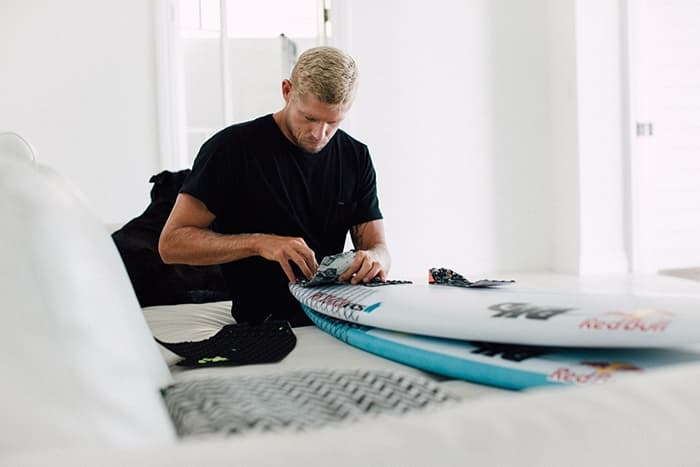
This image is property of www.boardcave.com.au.
9. Size and Shape Considerations
9.1 Full-Deck Traction Pads
Full-deck traction pads cover the majority of the surfboard’s deck, providing ample coverage for both the front and back foot. These traction pads are often used on high-performance shortboards or boards with a narrower deck. They offer maximum grip and traction, allowing surfers to confidently perform maneuvers and push their limits.
9.2 Arch Bar Positioning
The positioning of the arch bar on a traction pad is important for ensuring the arch of the foot aligns properly with the support provided. Some traction pads have adjustable arch bars, allowing surfers to position them according to their specific foot placement and surfing style. Additionally, the size and shape of the arch bar should cater to the curvature of the foot, providing optimal support and alignment.
9.3 Tail Coverage
Tail coverage refers to the area of the surfboard’s deck covered by the traction pad towards the back of the board. Different traction pads offer varying degrees of tail coverage. Advanced surfers may prefer traction pads with extended tail coverage, as it provides more area to grip and control the board during maneuvers. On the other hand, surfers who value a minimalist feel may opt for traction pads with less tail coverage.
9.4 Noserider and Longboard Pads
Noserider and longboard traction pads are designed specifically for longboards and noseriding. These traction pads typically have a wider and longer shape to accommodate the larger deck area of longboards. The design often includes additional kicks and arch bars to provide greater control and stability, allowing surfers to perform and maneuver at the nose of the board.
9.5 Shortboard and Performance Pads
Shortboard and performance pads are designed for high-performance riding and maneuvers on shortboards. These traction pads are often sleek and minimalistic, providing maximum grip and traction without interfering with foot movement. Shortboard and performance pads typically have a narrower shape, allowing for precise foot placement and control.
9.6 Traction Pad Dimensions
The dimensions of a traction pad are crucial in ensuring proper coverage and fit on the surfboard’s deck. When choosing a traction pad, consider the dimensions in relation to the dimensions of your surfboard. Length, width, and thickness all play a role in determining the size and fit of the traction pad. It’s important to choose a traction pad that covers an adequate portion of the deck and aligns with your specific board dimensions to ensure optimal grip and control.
10. Additional Tips and Advice
10.1 Importance of Proper Installation
Proper installation of a traction pad is vital for its performance and longevity. Ensure that the surfboard’s deck is clean and free from debris before applying the traction pad. Follow the manufacturer’s instructions for installation, including using the recommended adhesive and allowing sufficient curing time. Properly installed traction pads provide optimal grip and reliability, preventing any lifting or peeling during surfing sessions.
10.2 Maintaining and Cleaning Traction Pads
Regular maintenance and cleaning of a traction pad prolong its lifespan and ensure consistent performance. After each surf session, rinse the traction pad with freshwater to remove any salt, sand, or debris. Use a soft brush or cloth to gently scrub the traction pad, paying attention to any areas with heavy wax buildup. Avoid using harsh chemicals or abrasive materials that may damage the traction pad. Proper cleaning and maintenance will help preserve the grip and traction of the traction pad over time.
10.3 Replacing Worn-out Pads
Just like any other gear, traction pads wear out over time due to extended use and exposure to sun, saltwater, and wax. It’s important to regularly inspect the traction pad for signs of wear, such as thinning grip or peeling edges. When the grip becomes compromised or the pad starts to lose its adhesion, it’s time to replace it. Replacing worn-out traction pads ensures optimal performance and safety during surfing sessions.
10.4 Trying Different Brands and Models
The market for traction pads is diverse, with numerous brands and models offering a wide range of options. It’s beneficial to try different brands and models to explore the variations in grip, materials, and design. Each brand may have its unique features and technologies, so don’t limit yourself to just one brand. Experimentation with different types of traction pads allows you to find the one that best suits your preferences and performance requirements.
10.5 Seeking Expert Opinions
When in doubt, seeking expert opinions and advice can help you make an informed decision. Consult with experienced surfers, surf shop employees, or professional coaches who can provide insights based on their knowledge and expertise. They can offer valuable recommendations and guide you towards traction pads that align with your skill level, style, and surfing goals.
10.6 Considering Surfer Reviews
Surfer reviews are another valuable source of information when choosing a traction pad. Reading reviews and testimonials from other surfers who have used the traction pad you are considering can provide insights into its performance, durability, and overall satisfaction. Real-life experiences from fellow surfers can give you a better understanding of how the traction pad performs in various conditions and surfing styles.
10.7 Personal Testing and Experience
Ultimately, personal testing and experience are crucial in determining the perfect traction pad for you. Take the time to try different traction pads, both in controlled environments and while surfing. Assess the grip, traction, comfort, and overall feel to determine the traction pad that allows you to perform at your best. It may require testing multiple options, but the effort will be worthwhile in finding the perfect traction pad that enhances your surfing experience and performance.
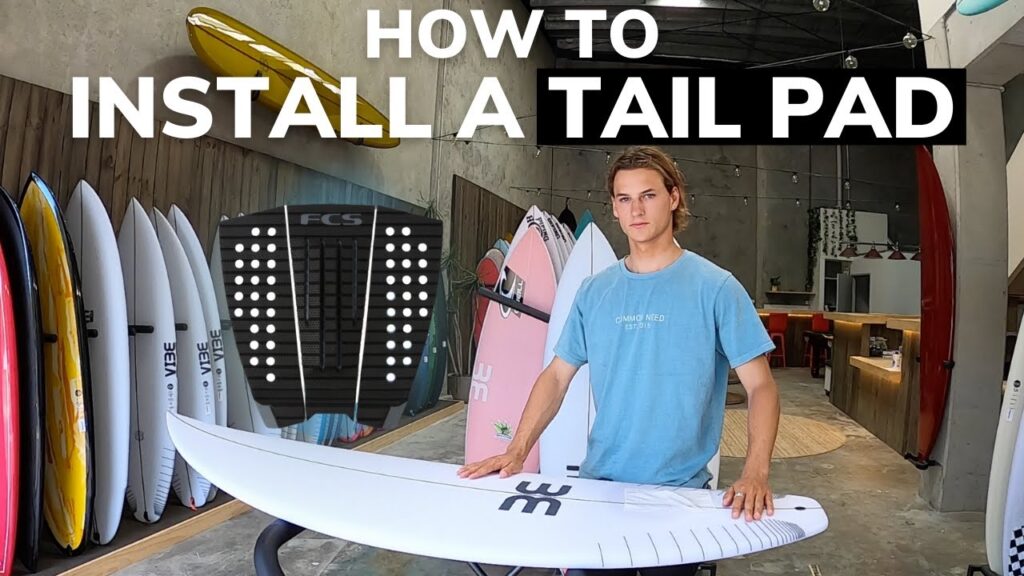
This image is property of i.ytimg.com.






